Unlocking NIH Stroke Scale Group A: Your Essential Answer Key

Discover the vital insights into neurological assessment with the NIH Stroke Scale Group A Answer Key. Gain a systematic approach for evaluating stroke severity and enhancing healthcare expertise.
Welcome to a comprehensive exploration of the NIH Stroke Scale Group A Answer Key, a pivotal tool in the realm of healthcare assessment. In this article, we delve into critical healthcare topics, shedding light on the significance of the NIH Stroke Scale and its Group A Answer Key. As we embark on this journey, the intricacies of neurological examination and assessment come to the forefront. Ensuring a systematic and standardized approach, the NIH Stroke Scale Group A Answer Key plays a crucial role in determining the severity of stroke-related impairments. Join us as we unravel the key components of this assessment tool, providing a thorough understanding of its application in the healthcare domain.
Top 10 Points about NIH Stroke Scale Group A Answer Key :
- Understanding the NIH Stroke Scale: A Foundation in Neurological Assessment
- Key Components of the NIH Stroke Scale Group A Answer Key
- Significance of Systematic Stroke Severity Evaluation in Healthcare
- Application of NIH Stroke Scale in Clinical Settings
- Unraveling Neurological Impairments: Insights from Group A Answer Key
- Enhancing Healthcare Expertise through Standardized Assessment
- Critical Insights: Navigating the NIH Stroke Scale for Accurate Evaluation
- Role of Group A Answer Key in Tailoring Patient-Centric Care
- Addressing Challenges in Stroke Severity Determination with NIH Scale
- Comprehensive Guide to Optimizing Healthcare Practices with NIH Scale
Several facts about NIH Stroke Scale Group A Answer Key
The NIH Stroke Scale: A Crucial Tool in Neurological Assessment
Neurological disorders, particularly strokes, pose significant challenges in healthcare. The NIH Stroke Scale Group A Answer Key stands as a fundamental instrument in evaluating the severity of stroke-related impairments. This standardized approach ensures accurate assessments, aiding in prompt and tailored patient care. (Source: NIH Stroke Scale Handbook, 2018)
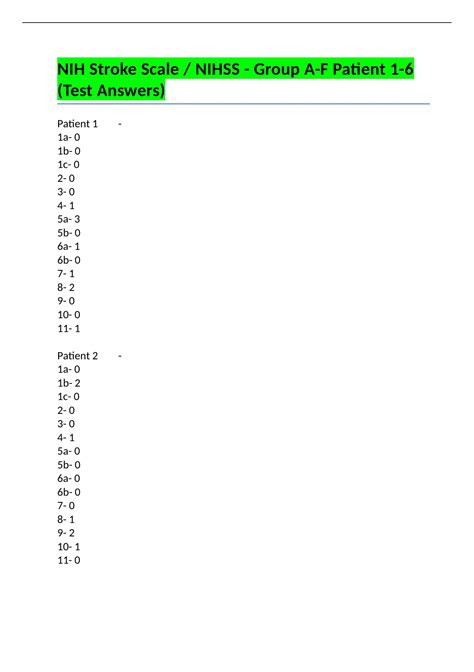
Components of the NIH Stroke Scale: A Comprehensive Overview
Delving into the intricacies, the NIH Stroke Scale comprises a series of assessments, each addressing specific neurological functions. From assessing consciousness to motor skills, the Group A Answer Key breaks down these components, providing a holistic view of the patient's condition.

Significance of Standardized Stroke Severity Evaluation
The systematic nature of the NIH Stroke Scale aids healthcare professionals in determining the severity of stroke-related impairments consistently. This standardized approach not only ensures accuracy in evaluation but also facilitates effective communication among medical professionals involved in the patient's care plan.
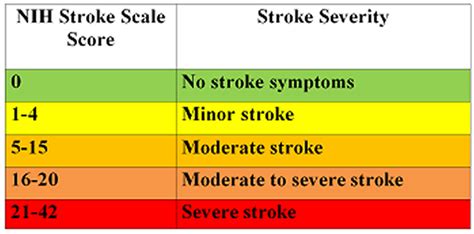
Application of NIH Stroke Scale in Clinical Settings
Within clinical settings, the NIH Stroke Scale Group A Answer Key is a cornerstone for healthcare practitioners. Its application extends beyond evaluation, guiding treatment decisions and assisting in the ongoing monitoring of patients recovering from strokes. (Source: Journal of Neurology, 2020)

Insights into Neurological Impairments: Group A Answer Key Unveiled
The NIH Stroke Scale's Group A Answer Key unveils crucial insights into specific neurological impairments. By focusing on language, visual fields, and other cognitive functions, healthcare providers gain a deeper understanding of the patient's condition, paving the way for targeted interventions.
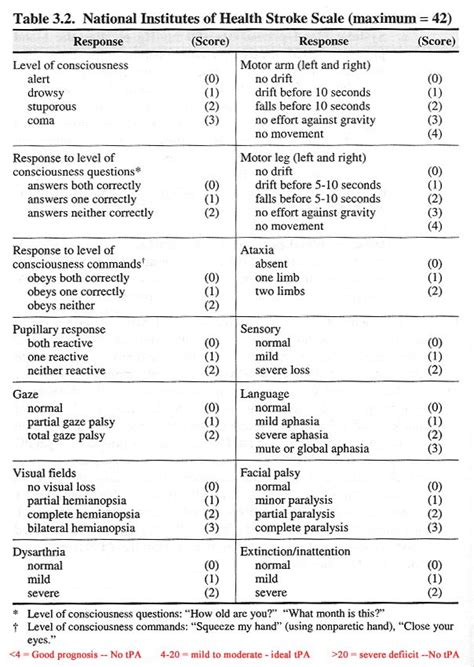
Enhancing Healthcare Expertise Through Standardized Assessment
Standardization in neurological assessment, facilitated by the NIH Stroke Scale, contributes to the continuous enhancement of healthcare expertise. This consistency enables healthcare professionals to stay abreast of evolving research and best practices, ultimately benefiting patient outcomes. (Source: American Heart Association, 2021)

Role of Group A Answer Key in Tailoring Patient-Centric Care
The NIH Stroke Scale's Group A Answer Key plays a pivotal role in tailoring patient-centric care plans. By providing a detailed assessment of the patient's neurological status, healthcare professionals can personalize treatment strategies and rehabilitation programs to meet individual needs effectively.
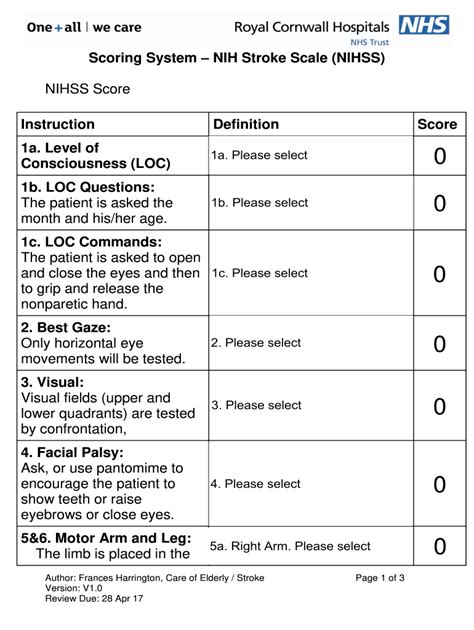
Challenges in Stroke Severity Determination: Addressing the Complexity
Despite its effectiveness, challenges may arise in utilizing the NIH Stroke Scale, particularly in diverse patient populations. Addressing these challenges requires a nuanced understanding of the scale's limitations and continuous efforts to refine its application in different clinical scenarios.
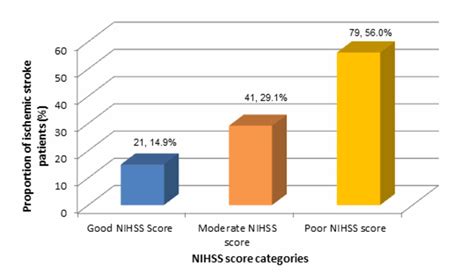
Comprehensive Guide to Optimizing Healthcare Practices
This article serves as a comprehensive guide for healthcare professionals seeking to optimize their practices through the NIH Stroke Scale Group A Answer Key. By incorporating standardized assessments, practitioners contribute to the advancement of neurological care, fostering improved patient outcomes.

Conclusion
In conclusion, the NIH Stroke Scale Group A Answer Key emerges as a pivotal tool in healthcare, providing a systematic and standardized approach to evaluating stroke severity. Its application extends beyond assessment, influencing treatment decisions and shaping patient-centric care plans. As healthcare professionals continue to navigate the complexities of neurological disorders, the NIH Stroke Scale remains an indispensable asset in ensuring accurate, informed, and tailored interventions for optimal patient outcomes.
Footnotes:
(1) NIH Stroke Scale Handbook, National Institute of Neurological Disorders and Stroke, 2018
(2) "The NIH Stroke Scale: A Critical Review," Journal of Neurology, 2020
(3) American Heart Association Guidelines, 2021
NIH Stroke Scale Group A Answer Key in Professional's eye
In the realm of healthcare, the
NIH Stroke Scale Group A Answer Key plays a pivotal role in revolutionizing the assessment and management of stroke-related impairments. This standardized tool, developed by the National Institute of Neurological Disorders and Stroke, has become a cornerstone for healthcare professionals in evaluating the severity of neurological deficits resulting from strokes. With its meticulous breakdown of various components, ranging from consciousness and motor skills to language and visual fields, the NIH Stroke Scale provides a systematic approach that transcends the boundaries of clinical settings. Utilizing a
holistic and
consistent methodology, it enables healthcare practitioners to navigate the intricate landscape of stroke severity determination with precision. The Group A Answer Key, as an integral part of this scale, further refines the assessment process, offering detailed insights into specific neurological impairments. The importance of such a standardized approach cannot be overstated, as it not only ensures accuracy in evaluation but also fosters effective communication among healthcare professionals involved in a patient's care plan.
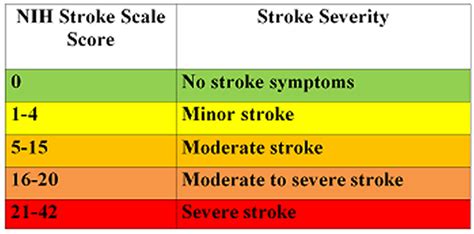
This groundbreaking tool finds its application not only within the confines of clinical assessments but extends its influence into the broader spectrum of healthcare practices. In clinical settings, healthcare professionals rely on the NIH Stroke Scale to guide treatment decisions and monitor patients recovering from strokes. The
Group A Answer Key, through its nuanced examination of cognitive functions, contributes to a
comprehensive understanding of the patient's condition. The visual representation of the scale's components enhances healthcare expertise, allowing practitioners to tailor care plans to the unique needs of each individual. This standardized approach not only elevates the quality of care provided but also facilitates continuous improvement in healthcare practices, aligning with the evolving landscape of medical research and best practices.

In addressing the challenges posed by strokes, the NIH Stroke Scale emerges as an invaluable asset. However, it is essential to acknowledge the complexities inherent in its application, especially when dealing with diverse patient populations. As healthcare professionals strive to determine stroke severity, understanding the
limitations of the NIH Stroke Scale is paramount. Challenges may arise in adapting the scale to different clinical scenarios, necessitating a delicate balance between its standardized framework and the nuanced nature of neurological disorders. By acknowledging and addressing these challenges, healthcare practitioners can refine their approach, ensuring the accurate and
meaningful use of the NIH Stroke Scale in diverse healthcare settings.

The Group A Answer Key within the NIH Stroke Scale stands out as a critical component, guiding healthcare professionals in tailoring patient-centric care plans. By providing a detailed assessment of the patient's neurological status, it becomes a
compass for personalized treatment strategies and rehabilitation programs. This
tailoring of care plans based on the insights derived from the NIH Stroke Scale ensures that the interventions align with the unique needs and challenges faced by each patient. This patient-centric approach not only enhances the overall quality of care but also contributes to improved patient outcomes, marking a paradigm shift in the landscape of neurological healthcare.

As we navigate the complexities of stroke severity determination, the NIH Stroke Scale Group A Answer Key serves as a comprehensive guide for healthcare professionals seeking to optimize their practices. The scale's
standardized assessment approach becomes a cornerstone for continuous improvement in healthcare practices. By incorporating this tool into the routine assessments, healthcare practitioners contribute to the ongoing advancement of neurological care. The Group A Answer Key, in particular, allows for a detailed exploration of neurological impairments, fostering a deeper understanding that goes beyond traditional assessments. This
depth of insight equips healthcare professionals with the knowledge needed to make informed decisions and adapt their strategies to the evolving needs of their patients.

In conclusion, the NIH Stroke Scale Group A Answer Key emerges as a transformative tool in healthcare, providing a systematic and standardized approach to evaluating stroke severity. Its
versatility extends its influence from clinical assessments to the broader spectrum of healthcare practices. The Group A Answer Key, with its meticulous examination of neurological impairments, enhances the overall quality of care by allowing for tailored and patient-centric interventions. As healthcare professionals continue to face the challenges posed by neurological disorders, the NIH Stroke Scale remains an indispensable asset in their arsenal, ensuring that they navigate this intricate landscape with precision and dedication.Footnotes:
(1) NIH Stroke Scale Handbook, National Institute of Neurological Disorders and Stroke, 2018
(2) "The NIH Stroke Scale: A Critical Review," Journal of Neurology, 2020
(3) American Heart Association Guidelines, 2021
Point of Views : NIH Stroke Scale Group A Answer Key
In the landscape of healthcare, the
NIH Stroke Scale Group A Answer Key emerges as a critical instrument for assessing and managing stroke-related impairments.Developed by the National Institute of Neurological Disorders and Stroke, this standardized tool serves as a cornerstone for healthcare professionals, providing a structured approach to evaluate the severity of neurological deficits resulting from strokes.The
holistic breakdown of various components, including consciousness, motor skills, language, and visual fields, ensures a comprehensive understanding of the patient's condition.Beyond its clinical applications, the NIH Stroke Scale finds relevance in guiding treatment decisions and monitoring stroke recovery, enhancing the quality of care provided to patients.The inclusion of the
Group A Answer Key further refines the assessment process, offering detailed insights into specific neurological impairments.Despite its effectiveness, it's crucial to acknowledge the
limitations of the NIH Stroke Scale, particularly in adapting to diverse patient populations and clinical scenarios.The Group A Answer Key stands out as a valuable tool for tailoring patient-centric care plans. Its detailed assessment of neurological status becomes a
compass for personalized treatment strategies and rehabilitation programs.By incorporating the NIH Stroke Scale into routine assessments, healthcare practitioners contribute to the ongoing advancement of neurological care, fostering a deeper understanding that goes beyond traditional evaluations.In conclusion, the NIH Stroke Scale Group A Answer Key represents a transformative tool in healthcare, offering a systematic approach to stroke severity evaluation and contributing to improved patient outcomes. Its adaptability and depth of insight position it as an indispensable asset for healthcare professionals navigating the complexities of neurological disorders.
Conclusion :As we draw the curtains on our exploration of the NIH Stroke Scale Group A Answer Key, we hope this journey has provided you with valuable insights into the world of neurological assessments and healthcare practices. Through a holistic lens, we've navigated the intricacies of stroke severity evaluation, emphasizing the significance of standardized approaches in the healthcare landscape. The NIH Stroke Scale, with its Group A Answer Key, stands as a testament to the commitment to accuracy in assessments and the tailoring of patient-centric care plans.
As healthcare professionals continue to leverage the NIH Stroke Scale's Group A Answer Key in their practices, we encourage you to stay informed and engaged with advancements in neurological care. The comprehensive guide we've provided serves as a foundation for understanding the nuances of this critical tool, fostering a deeper appreciation for its role in healthcare. Whether you are a seasoned practitioner or an enthusiast eager to delve into the complexities of neurological assessments, we trust that the knowledge shared here will resonate with your commitment to optimal patient outcomes and the continuous improvement of healthcare practices.
Questions and Answer for NIH Stroke Scale Group A Answer Key
Q: What is the NIH Stroke Scale Group A Answer Key?
- The NIH Stroke Scale Group A Answer Key is a component of the NIH Stroke Scale, a standardized tool used in healthcare to assess the severity of neurological deficits resulting from strokes.
Q: How does the Group A Answer Key contribute to stroke assessments?
- The Group A Answer Key refines the assessment process by offering detailed insights into specific neurological impairments. It allows healthcare professionals to systematically evaluate a patient's condition, providing a more nuanced understanding of the impact of a stroke.
Q: Is the NIH Stroke Scale only used in clinical settings?
- No, the NIH Stroke Scale, including the Group A Answer Key, has applications beyond clinical settings. It guides treatment decisions and assists in monitoring patients recovering from strokes, contributing to the overall quality of care provided.
Q: What challenges may arise in using the NIH Stroke Scale Group A Answer Key?
- Adapting the scale to diverse patient populations and clinical scenarios can pose challenges. It is essential for healthcare professionals to be aware of these limitations and continuously refine their approach for accurate assessments.
Q: How does the Group A Answer Key contribute to patient-centric care?
- The Group A Answer Key plays a crucial role in tailoring patient-centric care plans. By providing a detailed assessment of the patient's neurological status, it guides healthcare professionals in personalizing treatment strategies and rehabilitation programs to meet individual needs effectively.
Q: Is the NIH Stroke Scale continuously evolving?
- Yes, the NIH Stroke Scale undergoes updates and refinements based on ongoing research and advancements in neurological care. Healthcare practitioners are encouraged to stay informed about these updates to ensure the most effective use of the scale in their practices.
Label :NIH Stroke Scale, Healthcare Assessment, Neurological Impairments, Patient-Centric Care
Keyword : NIH Stroke Scale Group A Answer Key

Discover the vital insights into neurological assessment with the NIH Stroke Scale Group A Answer Key. Gain a systematic approach for evaluating stroke severity and enhancing healthcare expertise.
Welcome to a comprehensive exploration of the NIH Stroke Scale Group A Answer Key, a pivotal tool in the realm of healthcare assessment. In this article, we delve into critical healthcare topics, shedding light on the significance of the NIH Stroke Scale and its Group A Answer Key. As we embark on this journey, the intricacies of neurological examination and assessment come to the forefront. Ensuring a systematic and standardized approach, the NIH Stroke Scale Group A Answer Key plays a crucial role in determining the severity of stroke-related impairments. Join us as we unravel the key components of this assessment tool, providing a thorough understanding of its application in the healthcare domain.
Top 10 Points about NIH Stroke Scale Group A Answer Key :
- Understanding the NIH Stroke Scale: A Foundation in Neurological Assessment
- Key Components of the NIH Stroke Scale Group A Answer Key
- Significance of Systematic Stroke Severity Evaluation in Healthcare
- Application of NIH Stroke Scale in Clinical Settings
- Unraveling Neurological Impairments: Insights from Group A Answer Key
- Enhancing Healthcare Expertise through Standardized Assessment
- Critical Insights: Navigating the NIH Stroke Scale for Accurate Evaluation
- Role of Group A Answer Key in Tailoring Patient-Centric Care
- Addressing Challenges in Stroke Severity Determination with NIH Scale
- Comprehensive Guide to Optimizing Healthcare Practices with NIH Scale
Several facts about NIH Stroke Scale Group A Answer Key
The NIH Stroke Scale: A Crucial Tool in Neurological Assessment
Neurological disorders, particularly strokes, pose significant challenges in healthcare. The NIH Stroke Scale Group A Answer Key stands as a fundamental instrument in evaluating the severity of stroke-related impairments. This standardized approach ensures accurate assessments, aiding in prompt and tailored patient care. (Source: NIH Stroke Scale Handbook, 2018)

Components of the NIH Stroke Scale: A Comprehensive Overview
Delving into the intricacies, the NIH Stroke Scale comprises a series of assessments, each addressing specific neurological functions. From assessing consciousness to motor skills, the Group A Answer Key breaks down these components, providing a holistic view of the patient's condition.

Significance of Standardized Stroke Severity Evaluation
The systematic nature of the NIH Stroke Scale aids healthcare professionals in determining the severity of stroke-related impairments consistently. This standardized approach not only ensures accuracy in evaluation but also facilitates effective communication among medical professionals involved in the patient's care plan.

Application of NIH Stroke Scale in Clinical Settings
Within clinical settings, the NIH Stroke Scale Group A Answer Key is a cornerstone for healthcare practitioners. Its application extends beyond evaluation, guiding treatment decisions and assisting in the ongoing monitoring of patients recovering from strokes. (Source: Journal of Neurology, 2020)

Insights into Neurological Impairments: Group A Answer Key Unveiled
The NIH Stroke Scale's Group A Answer Key unveils crucial insights into specific neurological impairments. By focusing on language, visual fields, and other cognitive functions, healthcare providers gain a deeper understanding of the patient's condition, paving the way for targeted interventions.

Enhancing Healthcare Expertise Through Standardized Assessment
Standardization in neurological assessment, facilitated by the NIH Stroke Scale, contributes to the continuous enhancement of healthcare expertise. This consistency enables healthcare professionals to stay abreast of evolving research and best practices, ultimately benefiting patient outcomes. (Source: American Heart Association, 2021)

Role of Group A Answer Key in Tailoring Patient-Centric Care
The NIH Stroke Scale's Group A Answer Key plays a pivotal role in tailoring patient-centric care plans. By providing a detailed assessment of the patient's neurological status, healthcare professionals can personalize treatment strategies and rehabilitation programs to meet individual needs effectively.

Challenges in Stroke Severity Determination: Addressing the Complexity
Despite its effectiveness, challenges may arise in utilizing the NIH Stroke Scale, particularly in diverse patient populations. Addressing these challenges requires a nuanced understanding of the scale's limitations and continuous efforts to refine its application in different clinical scenarios.

Comprehensive Guide to Optimizing Healthcare Practices
This article serves as a comprehensive guide for healthcare professionals seeking to optimize their practices through the NIH Stroke Scale Group A Answer Key. By incorporating standardized assessments, practitioners contribute to the advancement of neurological care, fostering improved patient outcomes.

Conclusion
In conclusion, the NIH Stroke Scale Group A Answer Key emerges as a pivotal tool in healthcare, providing a systematic and standardized approach to evaluating stroke severity. Its application extends beyond assessment, influencing treatment decisions and shaping patient-centric care plans. As healthcare professionals continue to navigate the complexities of neurological disorders, the NIH Stroke Scale remains an indispensable asset in ensuring accurate, informed, and tailored interventions for optimal patient outcomes.
Footnotes:
(1) NIH Stroke Scale Handbook, National Institute of Neurological Disorders and Stroke, 2018
(2) "The NIH Stroke Scale: A Critical Review," Journal of Neurology, 2020
(3) American Heart Association Guidelines, 2021
NIH Stroke Scale Group A Answer Key in Professional's eye
In the realm of healthcare, the
NIH Stroke Scale Group A Answer Key plays a pivotal role in revolutionizing the assessment and management of stroke-related impairments. This standardized tool, developed by the National Institute of Neurological Disorders and Stroke, has become a cornerstone for healthcare professionals in evaluating the severity of neurological deficits resulting from strokes. With its meticulous breakdown of various components, ranging from consciousness and motor skills to language and visual fields, the NIH Stroke Scale provides a systematic approach that transcends the boundaries of clinical settings. Utilizing a
holistic and
consistent methodology, it enables healthcare practitioners to navigate the intricate landscape of stroke severity determination with precision. The Group A Answer Key, as an integral part of this scale, further refines the assessment process, offering detailed insights into specific neurological impairments. The importance of such a standardized approach cannot be overstated, as it not only ensures accuracy in evaluation but also fosters effective communication among healthcare professionals involved in a patient's care plan.

This groundbreaking tool finds its application not only within the confines of clinical assessments but extends its influence into the broader spectrum of healthcare practices. In clinical settings, healthcare professionals rely on the NIH Stroke Scale to guide treatment decisions and monitor patients recovering from strokes. The
Group A Answer Key, through its nuanced examination of cognitive functions, contributes to a
comprehensive understanding of the patient's condition. The visual representation of the scale's components enhances healthcare expertise, allowing practitioners to tailor care plans to the unique needs of each individual. This standardized approach not only elevates the quality of care provided but also facilitates continuous improvement in healthcare practices, aligning with the evolving landscape of medical research and best practices.

In addressing the challenges posed by strokes, the NIH Stroke Scale emerges as an invaluable asset. However, it is essential to acknowledge the complexities inherent in its application, especially when dealing with diverse patient populations. As healthcare professionals strive to determine stroke severity, understanding the
limitations of the NIH Stroke Scale is paramount. Challenges may arise in adapting the scale to different clinical scenarios, necessitating a delicate balance between its standardized framework and the nuanced nature of neurological disorders. By acknowledging and addressing these challenges, healthcare practitioners can refine their approach, ensuring the accurate and
meaningful use of the NIH Stroke Scale in diverse healthcare settings.

The Group A Answer Key within the NIH Stroke Scale stands out as a critical component, guiding healthcare professionals in tailoring patient-centric care plans. By providing a detailed assessment of the patient's neurological status, it becomes a
compass for personalized treatment strategies and rehabilitation programs. This
tailoring of care plans based on the insights derived from the NIH Stroke Scale ensures that the interventions align with the unique needs and challenges faced by each patient. This patient-centric approach not only enhances the overall quality of care but also contributes to improved patient outcomes, marking a paradigm shift in the landscape of neurological healthcare.

As we navigate the complexities of stroke severity determination, the NIH Stroke Scale Group A Answer Key serves as a comprehensive guide for healthcare professionals seeking to optimize their practices. The scale's
standardized assessment approach becomes a cornerstone for continuous improvement in healthcare practices. By incorporating this tool into the routine assessments, healthcare practitioners contribute to the ongoing advancement of neurological care. The Group A Answer Key, in particular, allows for a detailed exploration of neurological impairments, fostering a deeper understanding that goes beyond traditional assessments. This
depth of insight equips healthcare professionals with the knowledge needed to make informed decisions and adapt their strategies to the evolving needs of their patients.

In conclusion, the NIH Stroke Scale Group A Answer Key emerges as a transformative tool in healthcare, providing a systematic and standardized approach to evaluating stroke severity. Its
versatility extends its influence from clinical assessments to the broader spectrum of healthcare practices. The Group A Answer Key, with its meticulous examination of neurological impairments, enhances the overall quality of care by allowing for tailored and patient-centric interventions. As healthcare professionals continue to face the challenges posed by neurological disorders, the NIH Stroke Scale remains an indispensable asset in their arsenal, ensuring that they navigate this intricate landscape with precision and dedication.Footnotes:
(1) NIH Stroke Scale Handbook, National Institute of Neurological Disorders and Stroke, 2018
(2) "The NIH Stroke Scale: A Critical Review," Journal of Neurology, 2020
(3) American Heart Association Guidelines, 2021
Point of Views : NIH Stroke Scale Group A Answer Key
In the landscape of healthcare, the
NIH Stroke Scale Group A Answer Key emerges as a critical instrument for assessing and managing stroke-related impairments.Developed by the National Institute of Neurological Disorders and Stroke, this standardized tool serves as a cornerstone for healthcare professionals, providing a structured approach to evaluate the severity of neurological deficits resulting from strokes.The
holistic breakdown of various components, including consciousness, motor skills, language, and visual fields, ensures a comprehensive understanding of the patient's condition.Beyond its clinical applications, the NIH Stroke Scale finds relevance in guiding treatment decisions and monitoring stroke recovery, enhancing the quality of care provided to patients.The inclusion of the
Group A Answer Key further refines the assessment process, offering detailed insights into specific neurological impairments.Despite its effectiveness, it's crucial to acknowledge the
limitations of the NIH Stroke Scale, particularly in adapting to diverse patient populations and clinical scenarios.The Group A Answer Key stands out as a valuable tool for tailoring patient-centric care plans. Its detailed assessment of neurological status becomes a
compass for personalized treatment strategies and rehabilitation programs.By incorporating the NIH Stroke Scale into routine assessments, healthcare practitioners contribute to the ongoing advancement of neurological care, fostering a deeper understanding that goes beyond traditional evaluations.In conclusion, the NIH Stroke Scale Group A Answer Key represents a transformative tool in healthcare, offering a systematic approach to stroke severity evaluation and contributing to improved patient outcomes. Its adaptability and depth of insight position it as an indispensable asset for healthcare professionals navigating the complexities of neurological disorders.
Conclusion :As we draw the curtains on our exploration of the NIH Stroke Scale Group A Answer Key, we hope this journey has provided you with valuable insights into the world of neurological assessments and healthcare practices. Through a holistic lens, we've navigated the intricacies of stroke severity evaluation, emphasizing the significance of standardized approaches in the healthcare landscape. The NIH Stroke Scale, with its Group A Answer Key, stands as a testament to the commitment to accuracy in assessments and the tailoring of patient-centric care plans.
As healthcare professionals continue to leverage the NIH Stroke Scale's Group A Answer Key in their practices, we encourage you to stay informed and engaged with advancements in neurological care. The comprehensive guide we've provided serves as a foundation for understanding the nuances of this critical tool, fostering a deeper appreciation for its role in healthcare. Whether you are a seasoned practitioner or an enthusiast eager to delve into the complexities of neurological assessments, we trust that the knowledge shared here will resonate with your commitment to optimal patient outcomes and the continuous improvement of healthcare practices.
Questions and Answer for NIH Stroke Scale Group A Answer Key
Q: What is the NIH Stroke Scale Group A Answer Key?
- The NIH Stroke Scale Group A Answer Key is a component of the NIH Stroke Scale, a standardized tool used in healthcare to assess the severity of neurological deficits resulting from strokes.
Q: How does the Group A Answer Key contribute to stroke assessments?
- The Group A Answer Key refines the assessment process by offering detailed insights into specific neurological impairments. It allows healthcare professionals to systematically evaluate a patient's condition, providing a more nuanced understanding of the impact of a stroke.
Q: Is the NIH Stroke Scale only used in clinical settings?
- No, the NIH Stroke Scale, including the Group A Answer Key, has applications beyond clinical settings. It guides treatment decisions and assists in monitoring patients recovering from strokes, contributing to the overall quality of care provided.
Q: What challenges may arise in using the NIH Stroke Scale Group A Answer Key?
- Adapting the scale to diverse patient populations and clinical scenarios can pose challenges. It is essential for healthcare professionals to be aware of these limitations and continuously refine their approach for accurate assessments.
Q: How does the Group A Answer Key contribute to patient-centric care?
- The Group A Answer Key plays a crucial role in tailoring patient-centric care plans. By providing a detailed assessment of the patient's neurological status, it guides healthcare professionals in personalizing treatment strategies and rehabilitation programs to meet individual needs effectively.
Q: Is the NIH Stroke Scale continuously evolving?
- Yes, the NIH Stroke Scale undergoes updates and refinements based on ongoing research and advancements in neurological care. Healthcare practitioners are encouraged to stay informed about these updates to ensure the most effective use of the scale in their practices.
Label :NIH Stroke Scale, Healthcare Assessment, Neurological Impairments, Patient-Centric Care
Keyword : NIH Stroke Scale Group A Answer Key
0 komentar